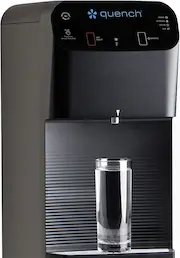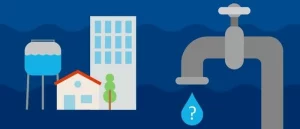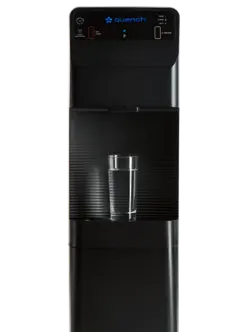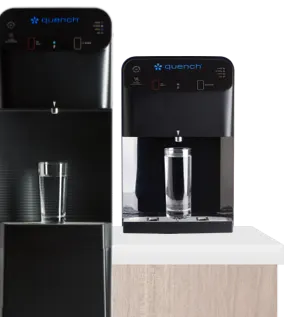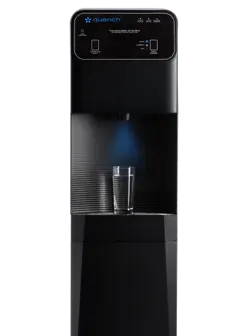Our planet is mostly covered by surface water, which might make it seem like we have plenty for drinking, cooking, and bathing. But less than 3% of Earth’s water is freshwater, and much of that isn’t easy for us to access. This scarcity poses a big challenge for many communities around the world.
Even though we all rely on water to survive, human activities add to today’s water stress. Pollution, climate change, industrial farming, unsustainable energy practices, and our growing population are all putting a strain on rivers, lakes, and other freshwater sources. This means more places are struggling with water shortages.
But while humans have caused a lot of the water scarcity we face, we also have the ability to find solutions to help lessen its impact. Keep reading to learn more about water scarcity and some of the exciting ways people are working to solve it.
What You Need To Know About Water Scarcity
- Water scarcity is a global issue, intensified by human activities.
- Climate change, population growth, and urbanization make water scarcity worse.
- Solutions include developing advanced water filtration systems, promoting water stewardship, and protecting wetlands.
- Cutting-edge technologies like smart water meters, AI-driven analytics, and IoT sensors are emerging as game changers for water management.
- Advocating for local policy changes can make a big difference in water conservation efforts.
What Is Water Scarcity?
At its simplest, the term water scarcity refers to insufficient access to the water resources necessary to sustain a region. The term applies to both human activities such as drinking and cooking, as well as the healthy functioning of an ecosystem. It can range from a challenging yet manageable water shortage to a full-blown water crisis, like what happened in Flint, Michigan.
When it comes to the human experience of water scarcity, the term is divided into two categories: physical and economic water scarcity.
- Physical water scarcity: When there’s not enough water available relative to its demand.
- Economic water scarcity: When people lack the financial resources to access, store, and distribute water effectively to homes and businesses.
Water Stress Persists as a Global Issue
If you’ve always had easy access to water, it might be hard to fully understand the seriousness of water scarcity. Yet, it’s a growing issue affecting every continent. UNICEF reports that around four billion people — two-thirds of the world’s population — experience severe water scarcity for at least one month each year.
The World Economic Forum highlights water shortage as one of humanity’s top risks. Currently, the most vulnerable populations are in India and China, but the challenges with water demand and quality affect many other countries too, including Great Britain, Australia, Mexico, Yemen, Iran, Pakistan, Saudi Arabia, various countries in sub-Saharan Africa, and even the United States.
How? In India and China, rapidly growing populations strain already limited resources. Great Britain faces challenges with aging infrastructure and pollution, while Australia contends with frequent droughts. Mexico and Yemen struggle with overexploitation and contamination, and sub-Saharan Africa deals with chronic shortages. Even in the U.S., areas like California experience significant water stress due to prolonged droughts and high water demand.
While water scarcity manifests differently in different regions, it produces a number of predictable consequences.
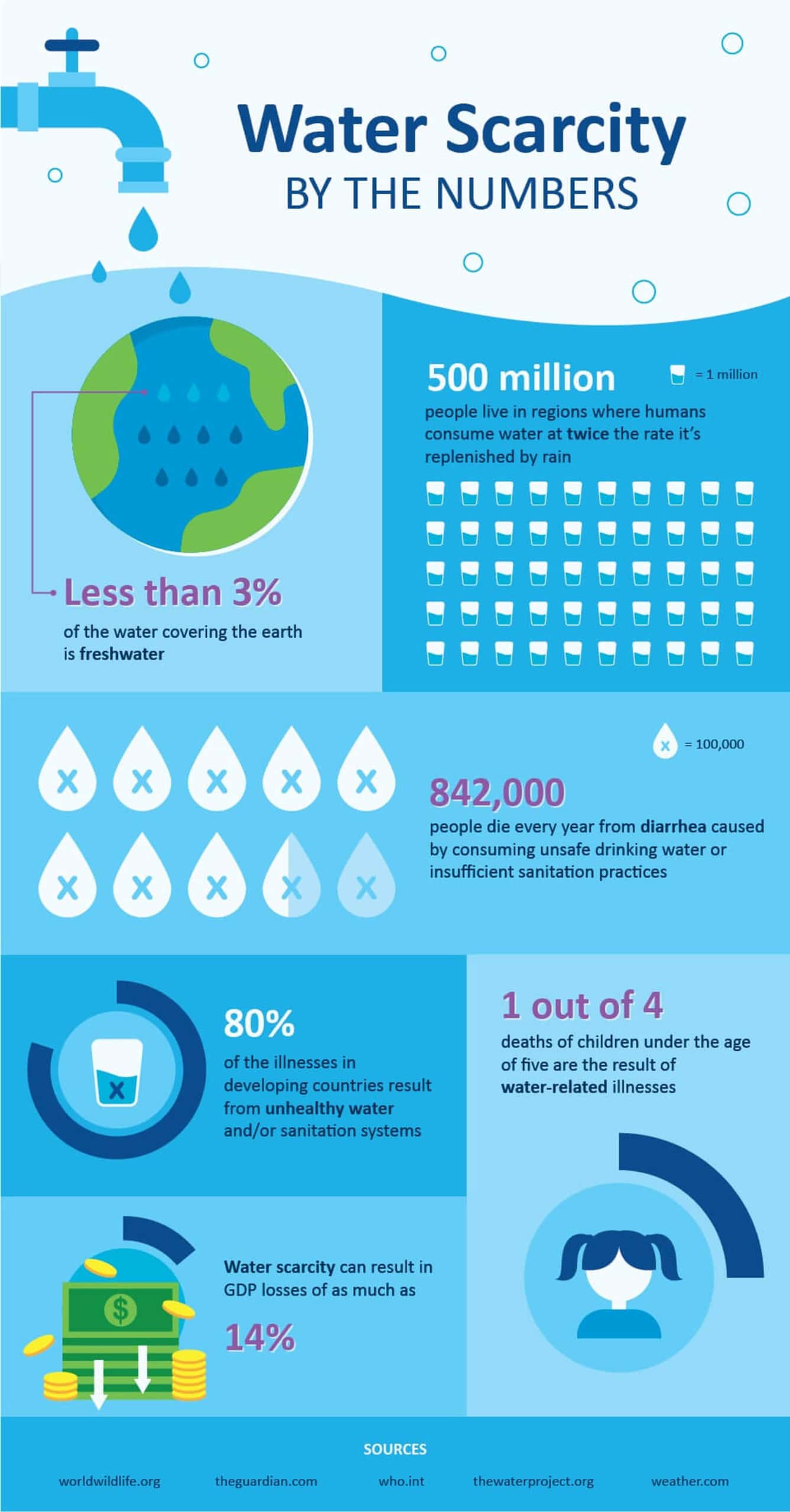
The Consequences of Water Shortages To Keep In Mind
Understanding the water crisis is crucial for your safety and awareness of global challenges. Here are some key issues caused by water scarcity:
Lack of Access to Safe Drinking Water
When people can’t access clean water for drinking, agriculture, and washing, lives are at risk. Every year, 842,000 people die from diseases like diarrhea linked to unsafe water. On top of that, The Water Project found that 80% of illnesses in developing countries stem from unhealthy water and sanitation systems — with one in four deaths of children under five attributed to water-related illnesses.
Threatened Ecosystems
Water shortage greatly affects wildlife and plants, notably leading to the rapid decline of wetlands. This loss reduces wildlife habitats and crucial services such as water filtration, storm protection, and flood control. Globally, 87% of wetlands have vanished since 1900, affecting regions like California, Florida, and Louisiana.
Decreased Food Access and Higher Costs
Limited water availability raises the cost of producing food crops, leading to higher prices in local markets. This dual challenge makes farming harder and reduces access to nutritious food, which has ramifications for public health.
Increased Conflict
History shows that rising food prices often escalate violence and social conflict. This makes sense when you consider that starving people are more willing to break social conventions if it means they’ll have something to eat or drink.
Rising Costs for Clothing, Electronics, and Other Consumer Goods
Forbes reports that industries like fashion and electronics, notorious for high water usage, face increased production costs as water becomes scarcer. This trend could impact accessibility to items like clothing, electronics, and more.
Despite these challenges, there’s still hope! People like you can contribute to conserving water resources and finding sustainable solutions to address these pressing issues.
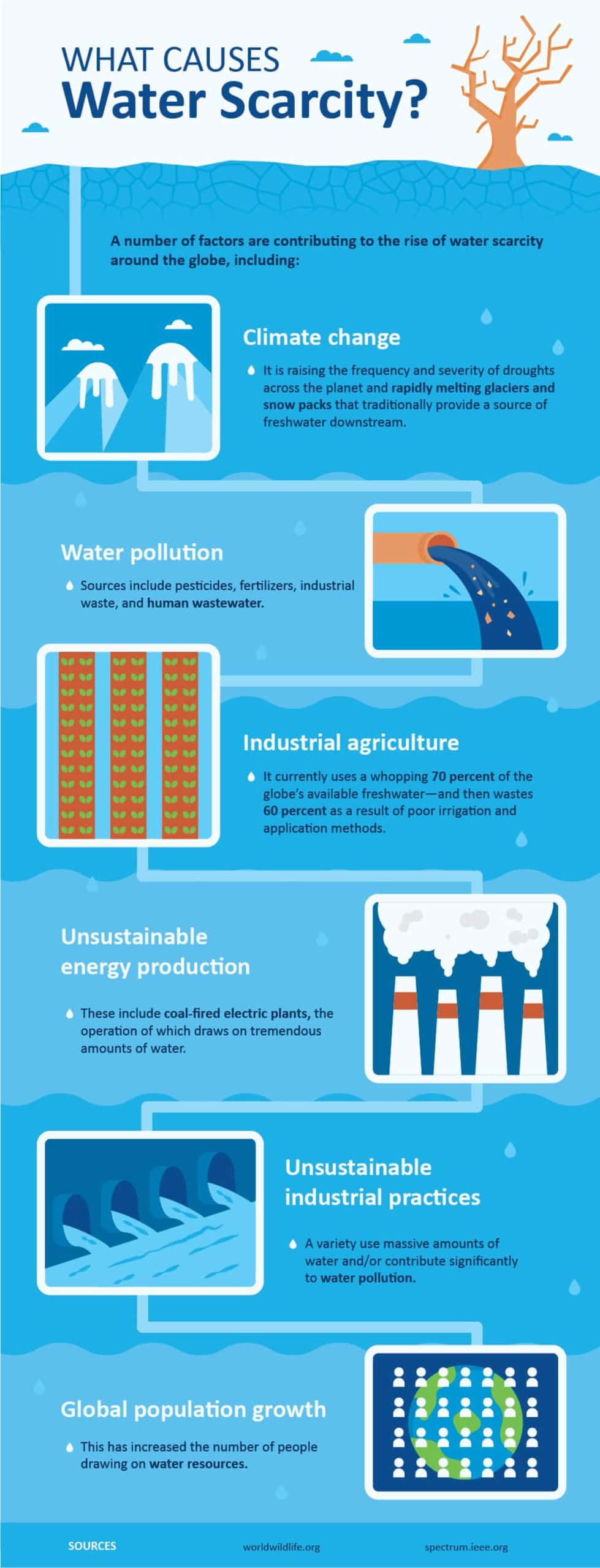
7 Steps to Address Water Scarcity
Water scarcity can be significantly reduced if people commit to making big, yet practical changes. Some of those action steps include:
1. Developing Water Filtration Systems
It’s one thing to have access to water and another to have safe drinking water. Effective water filtration systems ensure freshwater can be used safely. Like us at Quench, many companies worldwide are dedicated to creating advanced filtration systems that remove bacteria, microbes, and other contaminants.
2. Promoting Water Stewardship
Reducing water scarcity requires effort from every community. We need water stewards in all forms. And, fortunately, everyone can contribute, whether it’s:
- Taking shorter showers
- Installing low-flow toilets
- Collecting rainwater for gardening
- Reusing gray water, fixing leaks
- Investing in sustainable energy and water-saving initiatives
Water stewardship can be a big part of the puzzle when it comes to limiting water scarcity.
3. Protecting Wetlands
Remember when we mentioned that wetlands are natural water filtration systems? Well, that means they have a big role in collecting and purifying water. Wetlands are disappearing at an alarming rate, but conserving wetlands could have a major payoff. The Ramsar Convention, an international treaty, has already helped protect more than 2,000 wetlands.
4. Improving Irrigation Efficiency
Industrial agriculture is a major drain on water resources. Simply switching from flood irrigation to sprinklers or drip systems can save a significant amount of water. Combined with better soil management practices, such as no-till or limited tillage and mulching, efficient irrigation systems greatly reduce water usage.
5. Increasing Water Storage in Reservoirs
Climate change increases the frequency of droughts and floods. Expanding reservoir capacity allows us to capture and store floodwater, preventing it from flowing into the ocean and becoming saline. Because this stored water can be used during droughts, U.S. states like California and Wyoming are considering enlarging existing reservoirs or building new ones.
6. Using Cutting-Edge Technologies
Innovative technologies transform how we address the global water crisis. Here are just a few of the advanced technologies at play today:
- Smart water meters: Track consumption patterns and detect leaks in real-time, reducing waste and improving efficiency.
- AI-driven analytics: Offer predictive insights into water usage trends and potential shortages, enabling proactive measures.
- IoT sensors: Monitor water quality and availability across vast areas, providing critical data to optimize resource allocation.
Integrating these technologies is now a key aspect of improving water management and promoting water security.
7. Advocating for Local Policy Changes
Championing local policy changes is essential for tackling water stress on a global scale. By engaging with local government officials and community leaders, we can push for regulations that promote water conservation and sustainable development. This includes support for policies like:
- Water-efficient building codes
- Incentives for water-saving technologies
- Funding for conservation projects

Projected Trends in Water Scarcity and the Importance of Conservation
The unfortunate reality is that the global water crisis is expected to worsen in the coming decades. UNICEF reports that around 700 million people could face displacement due to severe water scarcity by 2030. This is primarily driven by:
- Climate change
- Population growth
- Urbanization
Rising temperatures and shifting weather patterns are likely to decrease freshwater availability while expanding populations and urban areas will heighten water demand on limited resources. That’s why water conservation efforts are crucial to prevent severe droughts, strained supplies, and increased water management costs.
Implementing More Sustainable Drinking Water Solutions at Work
Addressing the world’s water supply shortage may seem daunting, but you can make a significant impact by choosing a safe drinking water system for your workplace. Quench offers bottleless water dispensers and coolers that provide your team with delicious, clean water while supporting more efficient water use. Our dispensers connect directly to your building’s existing water line, helping to reduce waste associated with single-use plastic bottles.
While our systems, like those using reverse osmosis, do use water in the filtration process, they have a smaller environmental footprint compared to bottled water. This is because producing plastic bottles involves significant water usage — up to 5 gallons per bottle, including the extraction, production, and bottling processes. By choosing Quench, you reduce the demand for plastic production and its associated water waste.
In addition to environmental benefits, Quench products can also save your business money. Use our Cost Comparison Calculator to see how bottleless water coolers compare to other water services.
Enjoy clean, refreshing water while making a positive impact on the environment by partnering with Quench. Ready to get started? Get a free estimate today!
